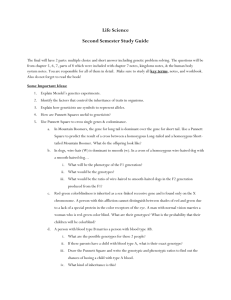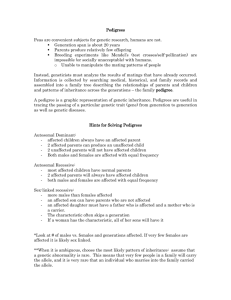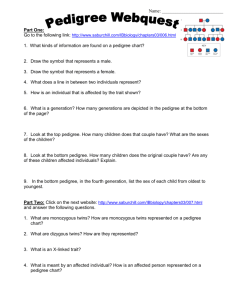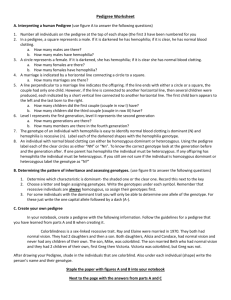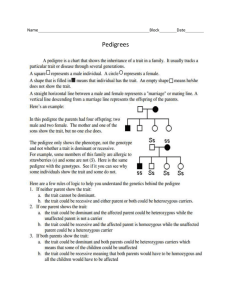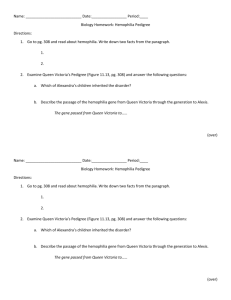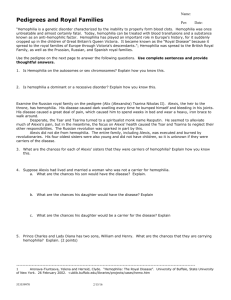Family Pedigrees
advertisement
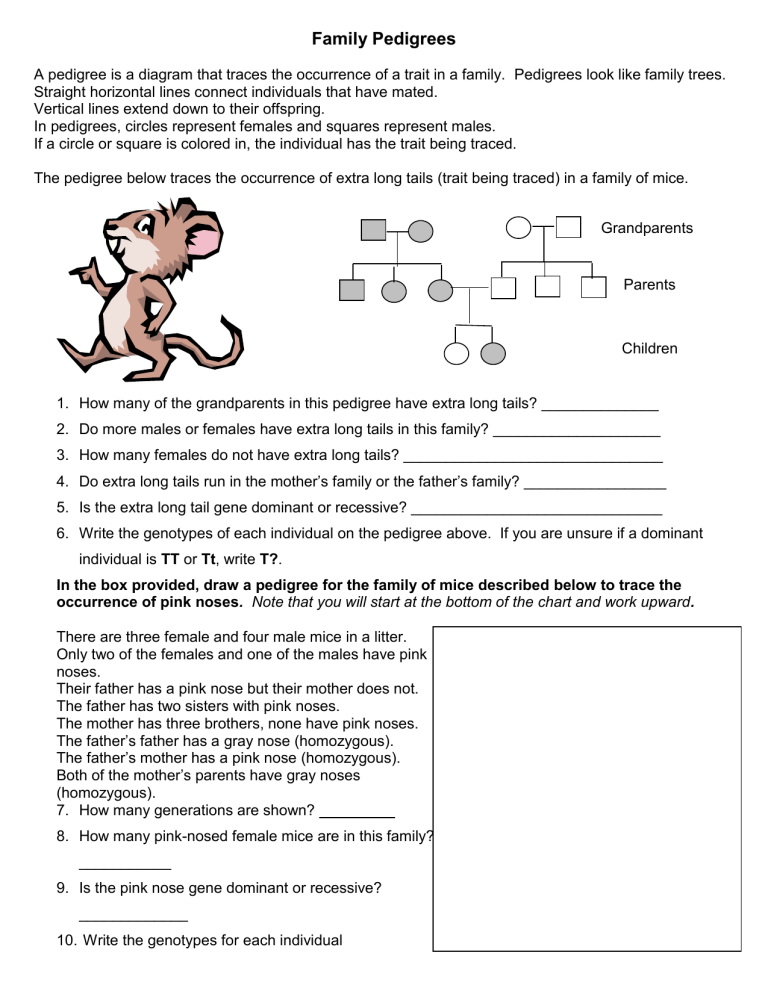
Family Pedigrees A pedigree is a diagram that traces the occurrence of a trait in a family. Pedigrees look like family trees. Straight horizontal lines connect individuals that have mated. Vertical lines extend down to their offspring. In pedigrees, circles represent females and squares represent males. If a circle or square is colored in, the individual has the trait being traced. The pedigree below traces the occurrence of extra long tails (trait being traced) in a family of mice. Grandparents Parents Children 1. How many of the grandparents in this pedigree have extra long tails? ______________ 2. Do more males or females have extra long tails in this family? ____________________ 3. How many females do not have extra long tails? _______________________________ 4. Do extra long tails run in the mother’s family or the father’s family? _________________ 5. Is the extra long tail gene dominant or recessive? ______________________________ 6. Write the genotypes of each individual on the pedigree above. If you are unsure if a dominant individual is TT or Tt, write T?. In the box provided, draw a pedigree for the family of mice described below to trace the occurrence of pink noses. Note that you will start at the bottom of the chart and work upward. There are three female and four male mice in a litter. Only two of the females and one of the males have pink noses. Their father has a pink nose but their mother does not. The father has two sisters with pink noses. The mother has three brothers, none have pink noses. The father’s father has a gray nose (homozygous). The father’s mother has a pink nose (homozygous). Both of the mother’s parents have gray noses (homozygous). 7. How many generations are shown? 8. How many pink-nosed female mice are in this family? ___________ 9. Is the pink nose gene dominant or recessive? _____________ 10. Write the genotypes for each individual Blood Relations Hemophilia is an inherited disorder in which sufferers lack a necessary protein that allows their blood to clot. A classic example of how hemophilia is passed on from generation to generation is found in the royal families of Europe during the 1800’s and early 1900’s. This pedigree details the inheritance of hemophilia in the descendants of Queen Victoria (1819-1901) of England. Study the pedigree and then answer this question: How is the inheritance of hemophilia different from the inheritance of most other traits? First Generation Second Generation Third Generation Fourth Generation KEY: Normal Female (XX) Normal Male (XY) h Carrier Female (X X) Carrier Male Female with Disorder (XhXh) Male with Disorder (XhY) 1.) What do all the hemophilia sufferers have in common? ________________________________________________________ 2.) What do all of the hemophilia carriers have in common? ________________________________________________________ 3.) How many male hemophilia carriers are there? Why? ________________________________________________________ 4.) What sex chromosome does a male get from his mother? __________ father? __________ 5. If a hemophiliac male marries a homozygous normal female, what chance will their daughters have of being carriers? ___________ 6. What chance will the sons of the parents in question 5 have of being hemophilacs? _______ 7.) Complete the Punnett Square of a Carrier Female and a Normal Male (see above for genotypes). Complete the probabilities for the Punnett Square: ____ out of 2 females will be carriers ____ out of 2 females will be normal ____ out of 2 males will have hemophilia ____ out of 2 males will be normal
